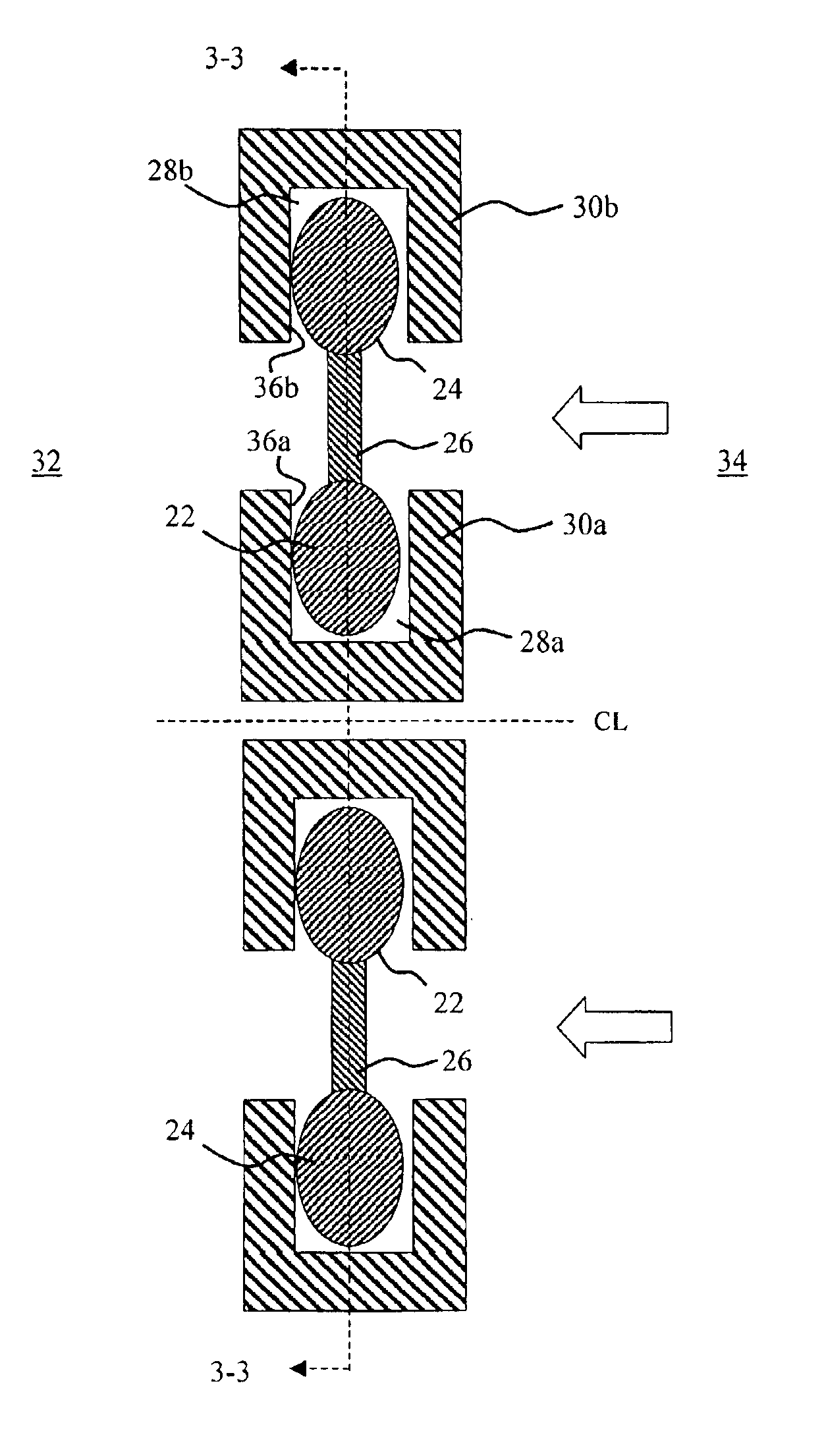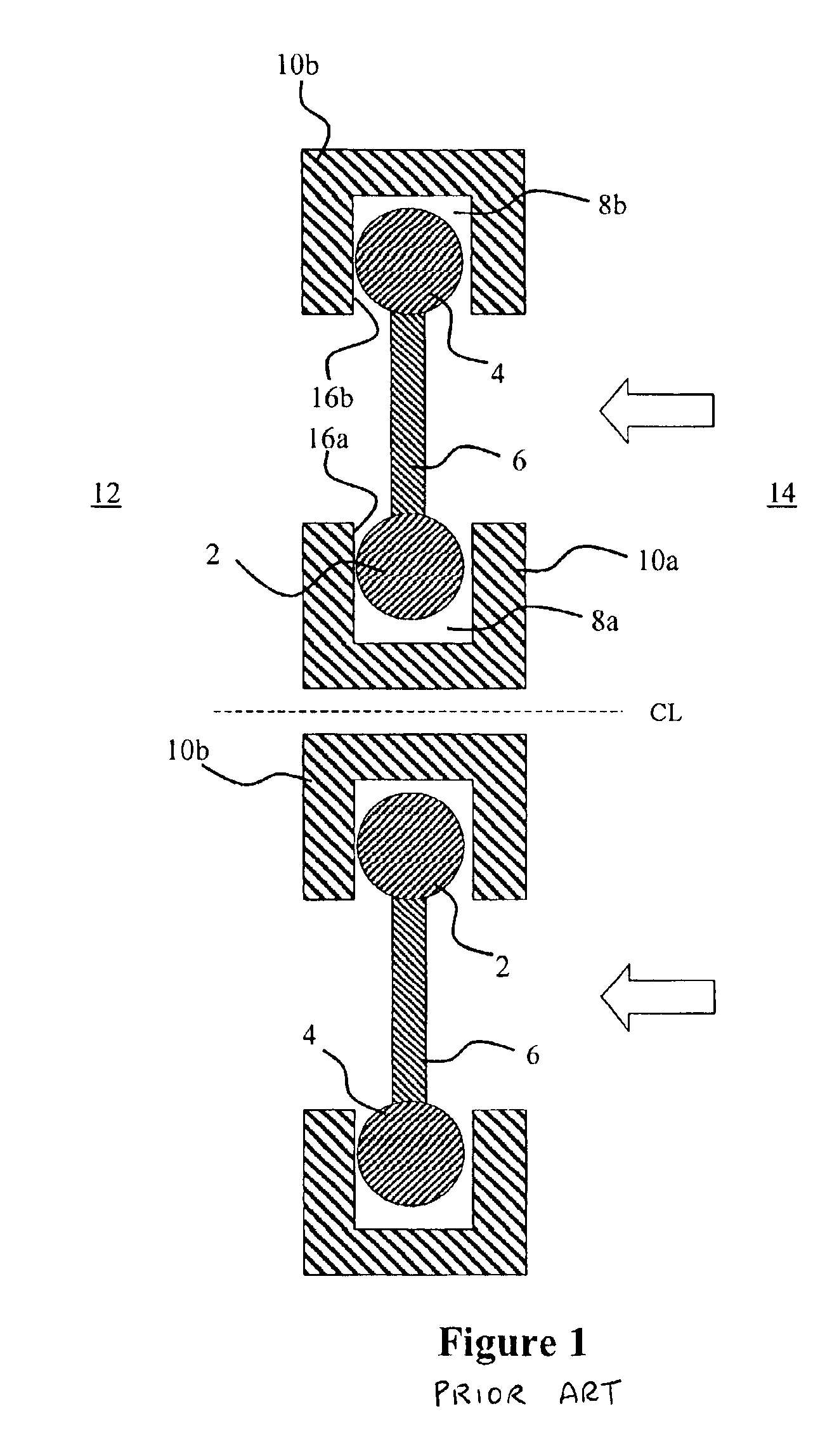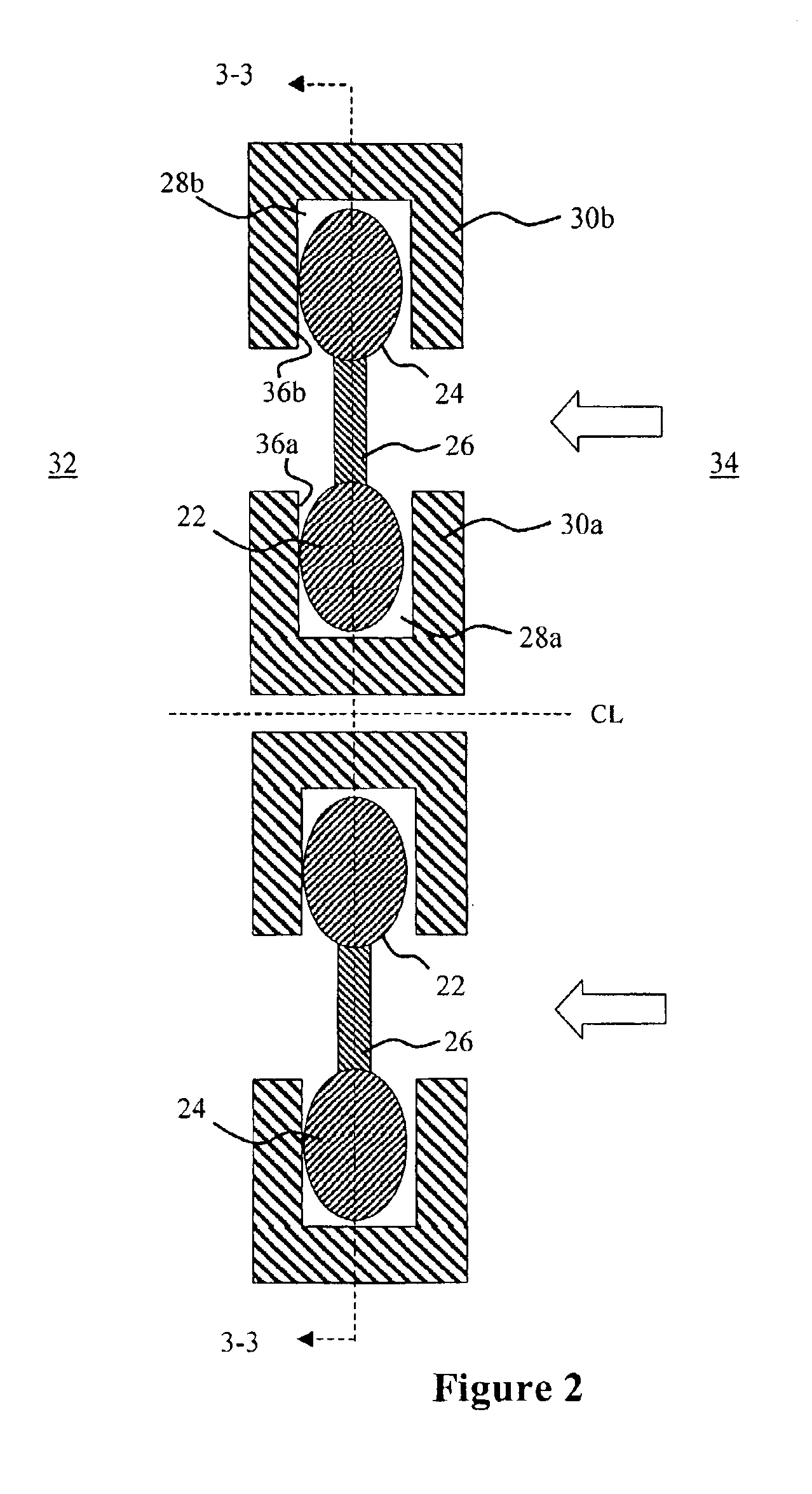Membrane seals
a technology of membrane seals and membranes, applied in the direction of machines/engines, liquid fuel engines, lighting and heating apparatus, etc., can solve the problems of premature wear and thermal attrition of the first and second sealing members, and achieve the effect of reducing fluid leakag
- Summary
- Abstract
- Description
- Claims
- Application Information
AI Technical Summary
Benefits of technology
Problems solved by technology
Method used
Image
Examples
Embodiment Construction
The present invention will now be explained with reference to FIGS. 2 to 4b.
FIG. 2 shows a membrane seal 20 having a first radially inner annular sealing member 22 and a second radially outer annular sealing member 24 sealably connected together by an annular membrane 26. Both the first and second sealing members 22, 24 have an oval cross-section. The first and second sealing members 22, 24 are contained within annular sealing grooves 28a, 28b formed by mutually confronting radially inner and outer tracks 30a, 30b as described above. The two tracks 30a, 30b are mounted on a radially inner and radially outer portion of a gas turbine engine casing (not shown) respectively.
The membrane seal 20 is positioned between a low-pressure region 32 of the engine and a high-pressure region 34 of the engine. The axial width of the sealing grooves 28a, 28b is slightly wider than the axial width of the first and second sealing members 22, 24. This means that the first and second sealing members 22...
PUM
 Login to View More
Login to View More Abstract
Description
Claims
Application Information
 Login to View More
Login to View More - R&D
- Intellectual Property
- Life Sciences
- Materials
- Tech Scout
- Unparalleled Data Quality
- Higher Quality Content
- 60% Fewer Hallucinations
Browse by: Latest US Patents, China's latest patents, Technical Efficacy Thesaurus, Application Domain, Technology Topic, Popular Technical Reports.
© 2025 PatSnap. All rights reserved.Legal|Privacy policy|Modern Slavery Act Transparency Statement|Sitemap|About US| Contact US: help@patsnap.com



